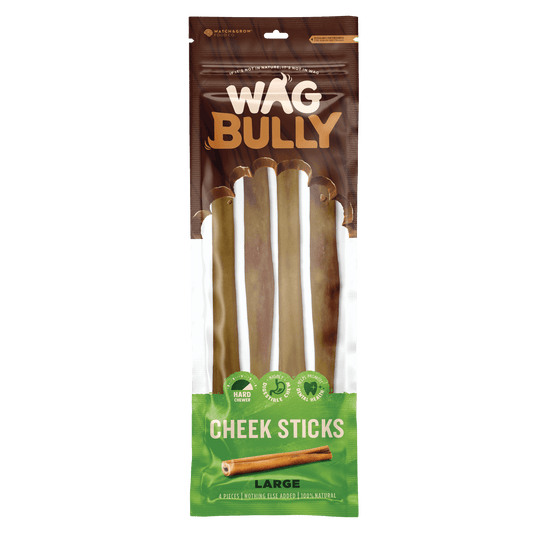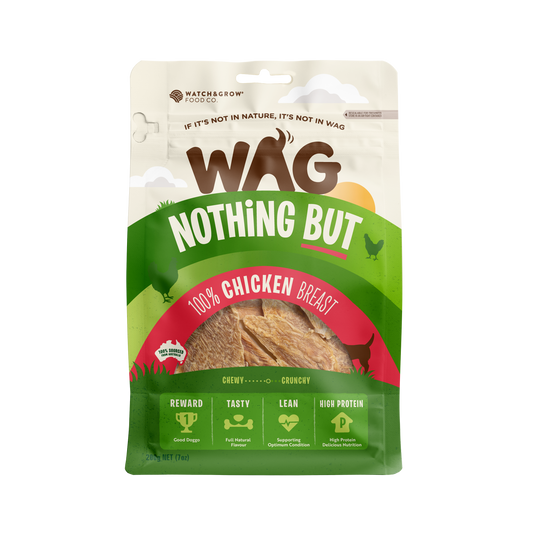You want to do the best thing for your doggo’s health, and you want to do it now. You’ve come to the ultimate decision: it’s time to go natural.
You’ve poured over the research. From blog posts to Facebook groups to veterinary journals – reading countless opinions (some louder than others) and clicked link after link down a rabbit-hole of canine nutrition.
Why transition to natural food?
Our dogs are family – that’s undeniable. But because they can’t unlock our iPhone and browse the Top 10 pet food reviews, it’s our job to maintain their tip-top health. Canine nutrition is more than just a buzzword; what your dog chows-down on daily can have direct implications for their overall wellbeing, the longevity of life and your hip-pocket. A nourishing diet can mean the difference between devastating medical conditions and a dog that reaches seniority with a clean bill of health.
By now it’s no secret that kibble can be bad news for your best friend. From ultra-processed ingredients, unwelcome fillers to nasty additives and preservatives, kibble is renowned for cutting corners on nutrition to lower production costs. Since you’re here, we figure you’ve come to the same conclusions that millions of informed pet-parents have too: it’s time to make the switch to natural food.
Natural, raw and wholesome homemade foods have almost unbelievable benefits. You can watch the transformation with your own eyes: sleek, shiny coats that are exceptionally soft to the touch. Healthy, hydrated skin that banishes yeasty build-up and a variety of common allergies. Pearly white teeth that’ll inspire an orchestra of ooh’s and ahh’s at the vet desk.
Why transitioning isn’t always simple
Good things don’t always come easy. Consider this, you were raised eating deep-fried wings and oily, fatty fries. Day in, day out, your staple diet was indisputably delicious but not quite the apex of nutrition. Then on your 18th birthday, you devour a plateful of steaming broccoli, salacious kale and crunchy carrot.
While this might be pretty far-fetched for humankind, it’s actually a shared reality of many dogs today. Most pet parents pick out a dry food they (mostly) trust and stick to it, occasionally rotating proteins and packaging in a very blue moon. It can take weeks for the gut to re-stabilise after a major diet change, and the task is even more rigorous for dogs who’ve had a strictly-kibble diet. This means substituting to natural, raw or dehydrated food can make serious waves – and it’s important to make the switch-up slowly.
Watch over your dog’s stomach
Transitioning from kibble to natural food can be a monumental task on your doggo’s hardworking digestive system. Stomach acidy, intestinal microbiomes, digestive enzymes and metabolism can all take a punch from diet changes and will need non-negotiable time to get back to tip-top working condition.
And that’s not all – surprisingly, you might expect some resistance from your over-particular pooch.
More often than not, popular dry foods are jam-packed with sugars and artificial flavours to inspire downright dog addiction. Stand your ground and resist those pleading, amber eyes. Just like making a wily toddler eat their vegetables you’re doing this for their own wellbeing. Once they get the taste for natural food (that tastes good and is good for them) they’ll ditch kibble for good.
Always transition to a balanced diet
Natural food doesn’t mean a grass-fed hamburger patty and a slice of zucchini. If you’re feeding a diet that isn’t balanced and informed by the power of canine nutrition you might as well stick to dry food. Always choose a diet that is standardised to meet – or even better, exceed – AAFCO standards of nutrition. Your dog might be profiting from reduced grains, fillers and additives, but they certainly won’t benefit from Vitamin B or Manganese deficiencies.
The advice you’ll find here is only applicable to a diet hitting all nutritional targets. Gastrointestinal concerns, digestive reactions and transition speed bumps may persist if the diet is ultimately doing your dog no good.
Pre-made natural diets are a catch-free way to ensure ultimate nutrition. Keep your eyes peeled for an AAFCO (or NRC) callout to feed without fear.
How to transition
Before you plunge into the world of natural feeding, keep in mind that every doggo is different.
If your pooch is struggling through the steps to transition, don’t stress – just take it slow. Keep your vet involved in the process for peace of mind, and maybe a glass (or three) of wine. You can shorten, spread-out or pause each stage to your heart’s desire: the end result will be the same. A wholesome, healthy diet and a doggo that not only survives, but thrives.
The first few days might throw you for a serious loop. Your doggo may carry on blissfully like nothing has changed – or might have an explosive accident on your off-white, chiffon sofa. Keep the doggy-door open for gastro-emergencies and refrain from treating as much as possible.
If your initial few days have been event-free, you just might be out of the woods. Some doggos will sail through a fresh-diet transition while others will hit the mother of icebergs. Always ensure that an upset stomach has had time to chill out and cool down before progressing to the next stage.
Congrats – you’ve entered the world of fresh, natural, wholesome & healthy food. Take it from us: once you’ve witnessed the out-of-this-world, galactic benefits, there’s no going back.
Shop the Recipe
WAG Team
Up Next
How assistance dogs change lives







